Liwonde NP is one of the few national parks in Malawi where you will find wild animals. With an area of 550 square kilometers, it is a relatively small reserve located 6 kilometers from the town of Liwonde and about 160 kilometers from Blantyre, the country’s second city.
Currently, different conservation and repopulation actions are being carried out in this park in order to expand and promote safari tourism in the country. Because of this, cheetahs and lions are being introduced. For this reason, it will sometimes be difficult to find these animals because there are not many of them. What you will find there will be many birds, with more than 400 different species, as well as a large number of hippos, elephants, antelopes (especially impalas) and crocodiles.
Anyway, one of the most beautiful points of Liwonde NP is its landscape, which is quite different from the rest of the national parks in this part of East Africa. It is home to a significant variety of vegetation such as lagoons alongside the Shire River, grassland areas, areas with palms and baobabs, mopane forests and more dense jungle.
The park is known for observing elephants, where you can observe up to more than 500 individuals. In 2017, seven cheetahs from South Africa were relocated to Liwonde NP, and there are now said to be around twenty. And, in 2018, 9 lions were introduced to the reserve in order to increase the number of predators in Malawi’s most important national park.
We spent one night sleeping in an accommodation on the outskirts of the Reserve, and the next morning we went on a 4-hour safari before leaving direction to Mulanje, our next stop on the trip.
How to get there?
If you are coming from the north, for example from the capital, the easiest way to get to Liwonde is to follow the M1 towards Blantyre, and just after the Chingeni toll, instead of turning off to follow the M1, you must continue straight on following the M8. From the toll booth in Liwonde, along this road, there is a distance of 40 kilometers that you will cover in approximately 45 minutes because you pass through an area with a high density of population and vehicles. So, if you come from the capital, it will take you about 3 and a half hours to reach Liwonde.
If you are coming from the south, for example from Blantyre or Zomba, the best way to get to Liwonde is to follow the M3 which takes you directly to the town where the national park is located. From Blantyre, there is a distance of 120 kilometers that you will cover in approximately 2 hours, while from Zomba, the former capital of Malawi, there are 50 kilometers that you will cover in approximately one hour of travel.
It is important to be aware of your speed on both the M1 and M3, which are major roads in the country, as you will find some mobile speed cameras with cameras. In addition, there are police forces that check vehicle documents, so it is important that you travel with valid vehicle insurance, as they will ask for it.
Once you arrive in Liwonde, you must turn onto the S131, a road that starts just before the gas station in the center of the town, and drive along this road for approximately 3 kilometers until you find the sign that will tell you to turn to left to reach the main gate of Liwonde NP, about 3 kilometers further from this junction through a dirt road and various local villages.
If you are traveling by public transport, the best way is to get one of the buses that leave Blantyre towards Liwonde, and get off at the main gas station on the M3, from where the park staff will pick you up for free to start any of the safari activities with them.
Permits and prices
In order to enter Liwonde National Park, you have to pay an entrance fee at the main access gate which is about 6 kilometers from the M3 on its way through Liwonde. The entrance fee per person per day is 30 USD for an international tourist, and 4 USD for access with your own vehicle. You can only pay with a VISA card, kwachas or US dollars issued after 2013. The national park’s opening hours are from 6am to 6pm.
The best time to visit this national park is from April to September, right after the heavy rainy season and where you will have more options (especially between July and August which is the driest time and there is less vegetation) to see the different types of animals.
What to do in Liwonde NP?
The two main activities to do in Liwonde NP are obviously related to the safari. Some stay outside the park, while others take advantage of the proximity of towns like Zomba to make the day trip out and back. The two main activities we highlight to do in Liwonde NP are:
Go on a safari with car in search of animals
In this park, you can access it with your own vehicle or with some of the accommodations that are located outside the nature reserve and that will take you there with cars fully adapted for safaris.
We went to visit the park during the month of March, the last month of the rainy season, and the terrain inside the nature reserve was very muddy, with some inaccessible areas. For this reason, we decided to do the safari with a car from the Liwonde Safari Camp, where we were staying, and in this way to go with a guide (Brave) who knew the different paths of the Reserve through which we could pass.
These driving safaris are usually done early in the morning or late in the afternoon when the wildlife is most active. We went on a safari for a price of 19,000 MWK per person, that is, approximately 16 euros.
As we mentioned before, what we liked most about the park was the great diversity of landscapes it had. Being able to see the Shire River full of water, and the areas of very green pastures, along with the palm tree area and most of the jungle was very beautiful, as we were not used to seeing this diversity in such a small space of land in the different national parks we had previously visited (Kruger NP, in South Africa, does have a lot of diversity of landscapes but its extension is 35 times the size of Liwonde NP!).
And, in addition, we were very lucky to see elephants, antelopes and a whole family of lions (the only one in the reserve) walking on a large esplanade. With the rainy season and the vegetation so high, we were really lucky.
Take a canoe safari on the Shire River
Another of the star activities to do during your stay in Liwonde NP is a canoe safari on the Shire River, the main water artery of the national park. We didn’t do it because since it was the rainy season, many animals wouldn’t be in the main river nor would they come near to drink water since they would be resting in the different lagoons inaccessible to visitors. But, if you travel during the dry season, this is one of the best activities you can do in Liwonde.
Going on a canoe safari allows you to see different aquatic animals such as crocodiles or hippos, and you may also be lucky enough to see elephants cooling off in the water. These safaris are also usually carried out early in the morning or just before sunset, and have an approximate price of 20 dollars per person. You can book them at the main accommodations around Liwonde National Park.
Where to sleep in Liwonde NP?
Liwonde NP is relatively close to major cities such as Zomba, the former capital of Malawi. Therefore, there are many who, in a single day, take the opportunity to go on a safari in Liwonde and return to sleep in Zomba. Anyway, next to the national park there are different accommodations that we recommend in order to be closer to nature and from where, if you’re lucky, you can also observe very near some wild animals, such as elephants or hippos. These are:
– Liwonde Safari Camp: Our accommodation when we were in Liwonde NP. It has different types of rooms and also options for camping with your vehicle (with prices of 10 USD per person per night). It has great showers and toilets, and it has a good restaurant and a place where you can take the beers you want (and which, of course, you will have to write down on a piece of paper to pay for later). In addition, it has different lookouts from where you can observe some animals such as elephants and hippos that cross the river to approach the vegetation close to this accommodation. Consider that it is inside the nature reserve and therefore not closed. To access the accommodation you will have to pass a fence which is used to prevent wild animals from escaping. They organize different activities and safaris within the reserve itself. We went on a safari the next morning with Brave and, despite it being the rainy season, we were able to enjoy a different landscape and the famous lion family of Liwonde NP. For more information, you can click here.
– Mvuu Camp: This accommodation located next to the Shire River and separated from the different towns around the reserve, is located in the middle of the national park. It can only be reached by boat, and from here you are sure to observe a large amount of wildlife such as elephants, crocodiles and hippos. Suitable for those traveling on a medium-high budget. For example, camping costs 40 USD per person, plus the park entrance that you also have to pay because it is within the boundaries of the national park. If you want more information, you can click here.
Our route
We only entered the national park during a safari that we did early the next morning. The day before we arrived from Nkhata Bay, having discovered the fantastic Likoma Island, and driving for a whole day to reach the southern part of Malawi. We were going with Susanna, Esteve’s sister, with whom we would go on a safari through Liwonde NP but with a guide from the Liwonde Safari Camp, as the roads were still very muddy from the rain and there were some of them that were closed.
Below, we’ll highlight some of the most special moments we experienced during our few hours spent inside Liwonde NP:
The most early morning animal in the park
Right after the entrance and passing through a few puddles of water, we noticed an animal among the vegetation that was staring at us. It was a small jackal that had woken up very early (or hadn’t gone to sleep yet) that greeted us right at the entrance to Liwonde NP.
A family of nyalas in a very tropical landscape
We were one of the few tourists who had entered the park that day, and there, sitting on the grass, was a whole family of peaceful nyalas, and in the background, a set of palm trees that seemed taken from a very tropical landscape. Now, the park was introducing lions and so this tranquility of these antelopes is sure to be fleeting…
A hippopotamus accompanied by different fishing birds
Moving along the muddy paths of Liwonde NP, we found a single hippo, young, standing in a clearing of vegetation where there appeared to be a lot of water below. Another of the top animals we had to see in Liwonde NP.
The same hippopotamus and an elephant sharing space in the same esplanade of vegetation
And suddenly, beyond the hippopotamus, a lone elephant appeared, with a bird on its body. The elephant is one of the most numerous animals in Liwonde NP, but more complicated to see in the rainy season because they are located deep in the vegetation because it is easier for them to find water there.
A couple of warthogs doing what they like best: stirring the mud
Going on a safari in the rainy season means that the grounds are very muddy. This is where the figure of the warthog appears, also known as the African wild pig – or Pumbaa from the Lion King – who loves to rub himself in the mud.
A lilac-breasted roller on an ant nest
Birds are one of the most important animals in Liwonde NP, with over 400 different species. We were lucky enough to see Laia’s favorite bird, a lilac-breasted roller resting on an ant nest. In addition, she was able to take a good snapshot since it is often difficult to photograph these animals.
And, suddenly, Liwonde NP had a surprise for us: the only family of lions in the park
Brave was commenting that the search for the lions was very complicated. He had tried to talk by radio with the park rangers to see if they had been seen, but the answer was no. We continued to drive through large esplanades of vegetation, but with no luck. We turned around, as the road was getting very muddy and just as we were leaving that area, we saw a family of lions walking in the middle of the vegetation.
All the members were there: the male lion who was clearly identified with his characteristic mane and who was very lazy, the lionesses who were very dirty from the mud of the vegetation, and cubs playing with each other. A spectacle that we were lucky enough to experience before they restarted their march away from the path where we were and into the exuberant vegetation of the forest.
Not all the water antelope are the same
Water antelopes are one of the animals we saw the most during our safari in Liwonde NP. Here, with this grayer landscape, we find four of them staring at us, all posing for Laia’s photograph. One of the main characteristics of these animals is that their skin secretes a greasy substance that smells bad and that allows them to scare off their predators. In addition, you can see that they have a ring-shaped white line on the back of their butts so that the young can follow their mothers more easily.
Landscapes of winding paths between palm trees
Liwonde NP is a national park with stratospheric landscapes. Here, during our gray day, you can see the red dirt roads, still wet from the rain of the last few days, that pass between different palm trees that make this national park so characteristic. The diversity of landscapes in the Liwonde NP is quite curious, since in a very small space we find different ecosystems that coexist with the waters of the Shire River and the diverse wildlife that we find in this reserve, and that will continue to increase thanks to the work of conservation and introduction of new species that are being carried out by those in charge of the park.

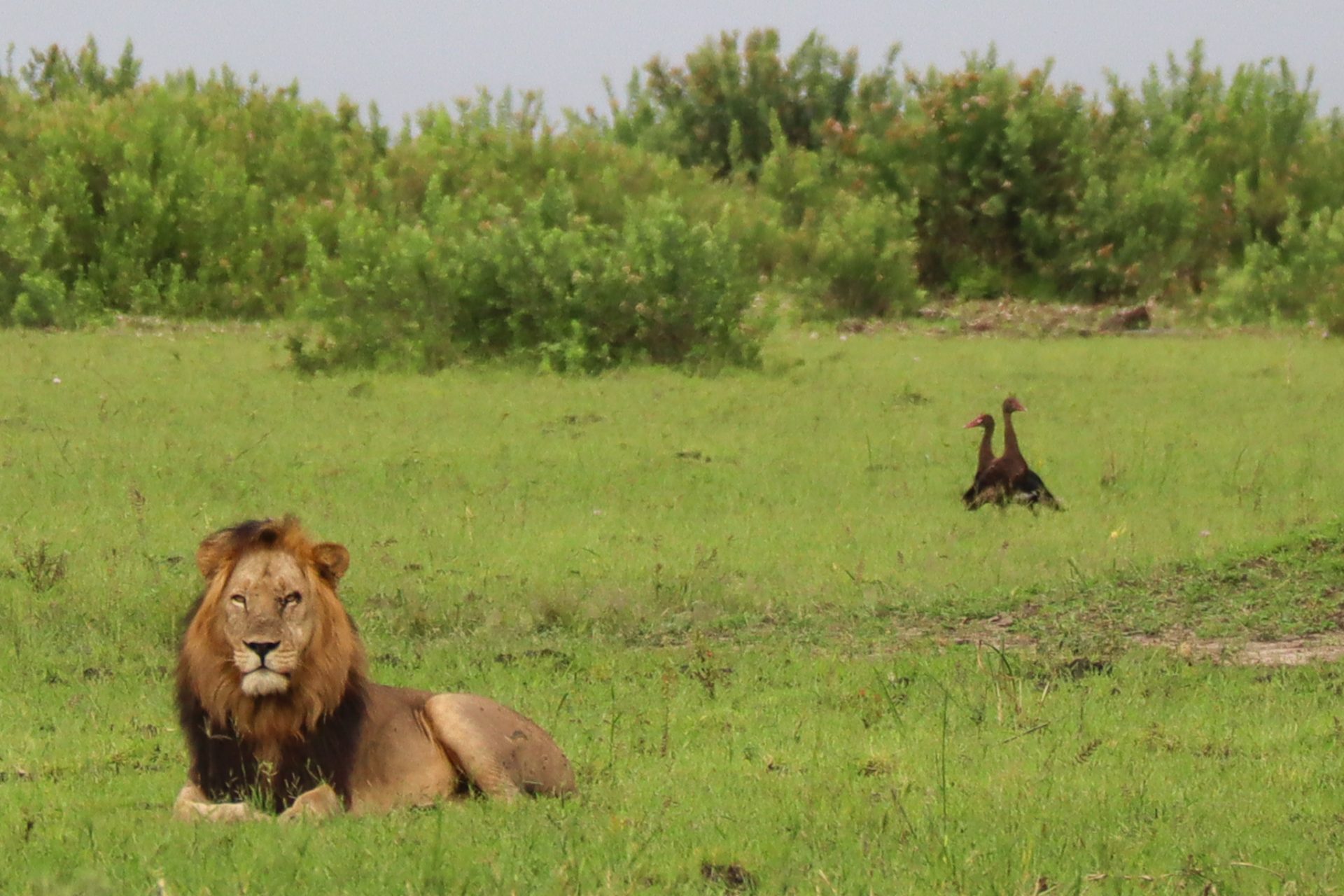
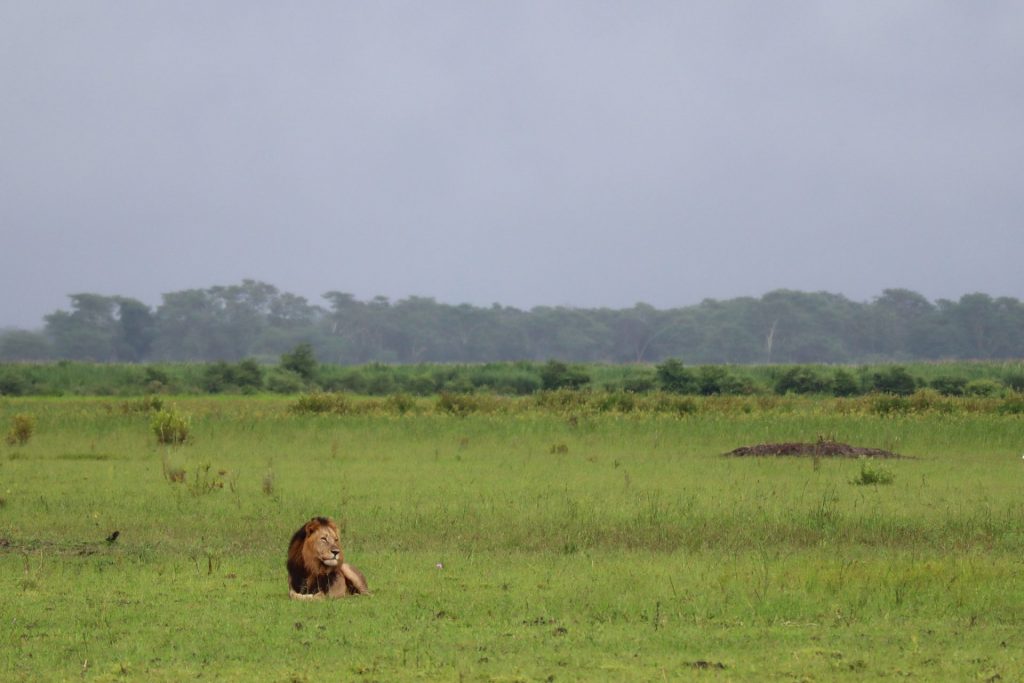



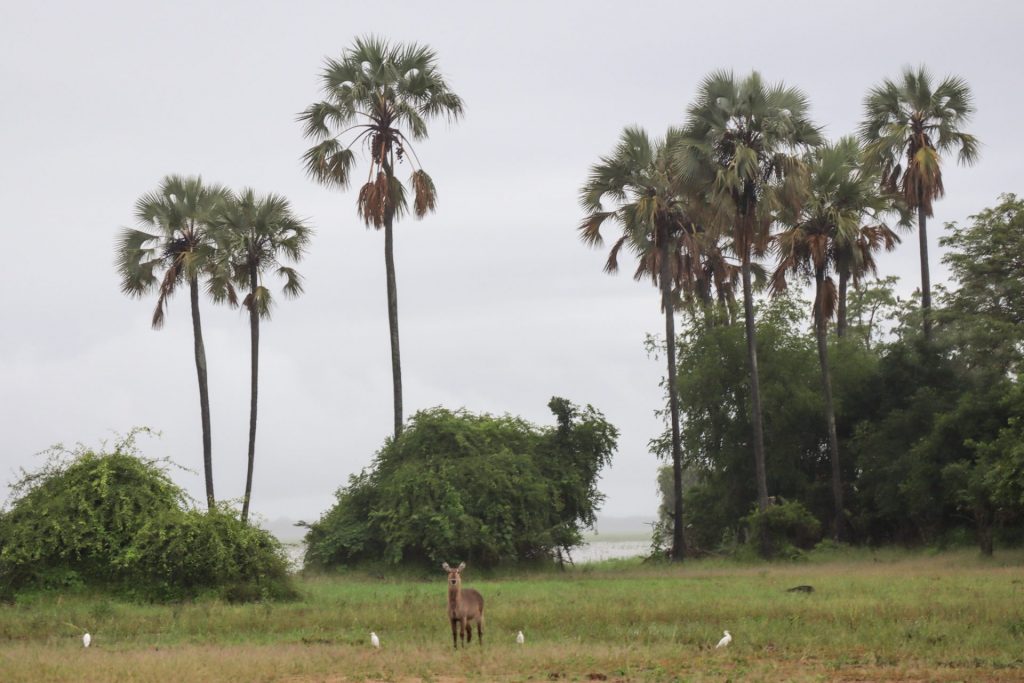
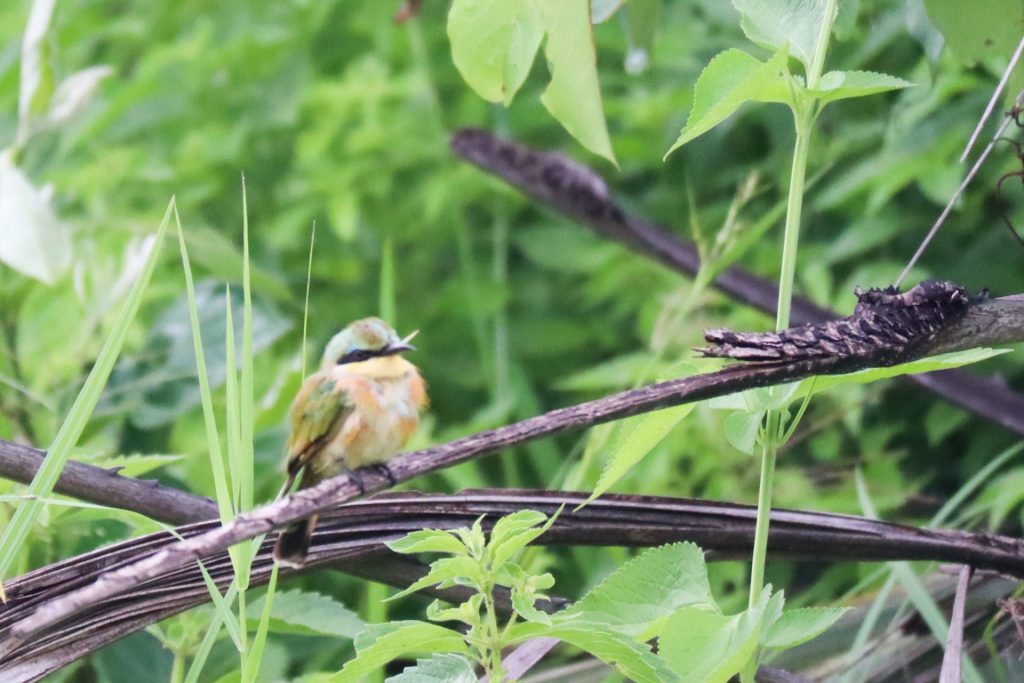
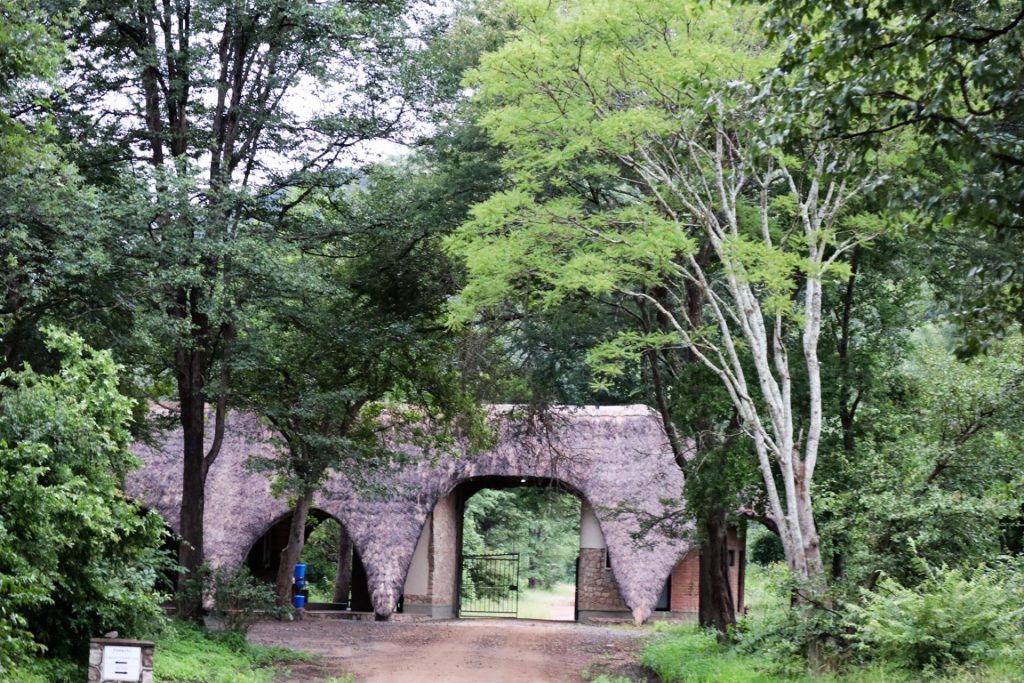
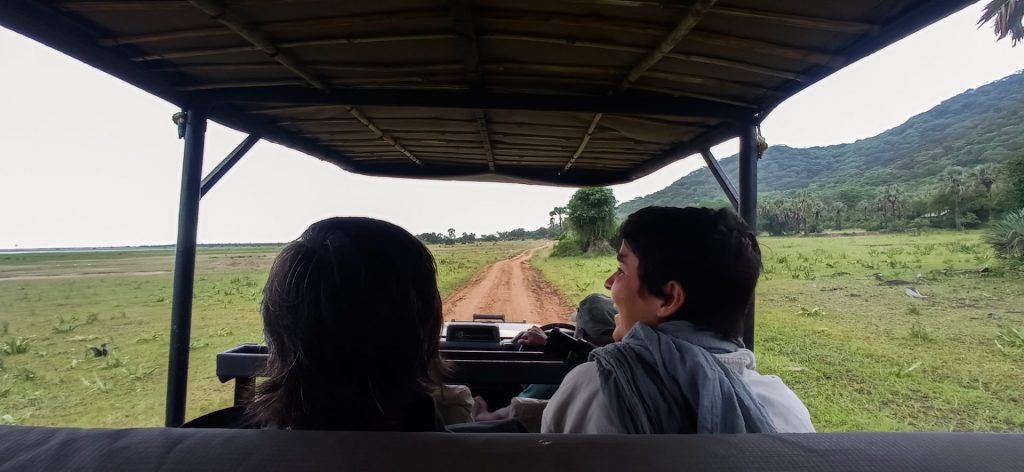
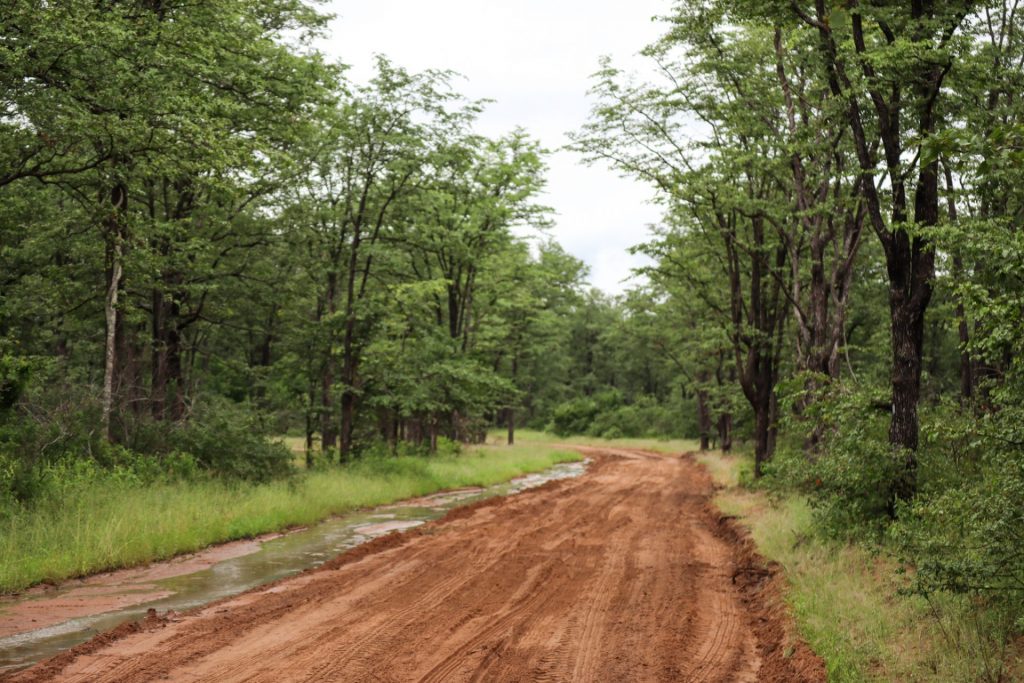



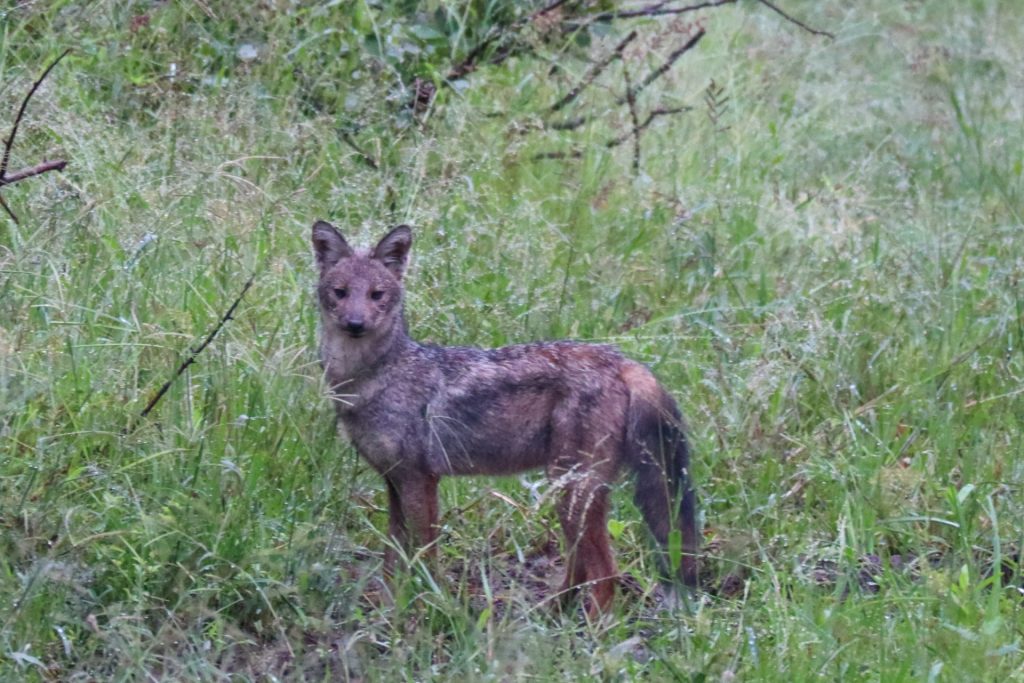

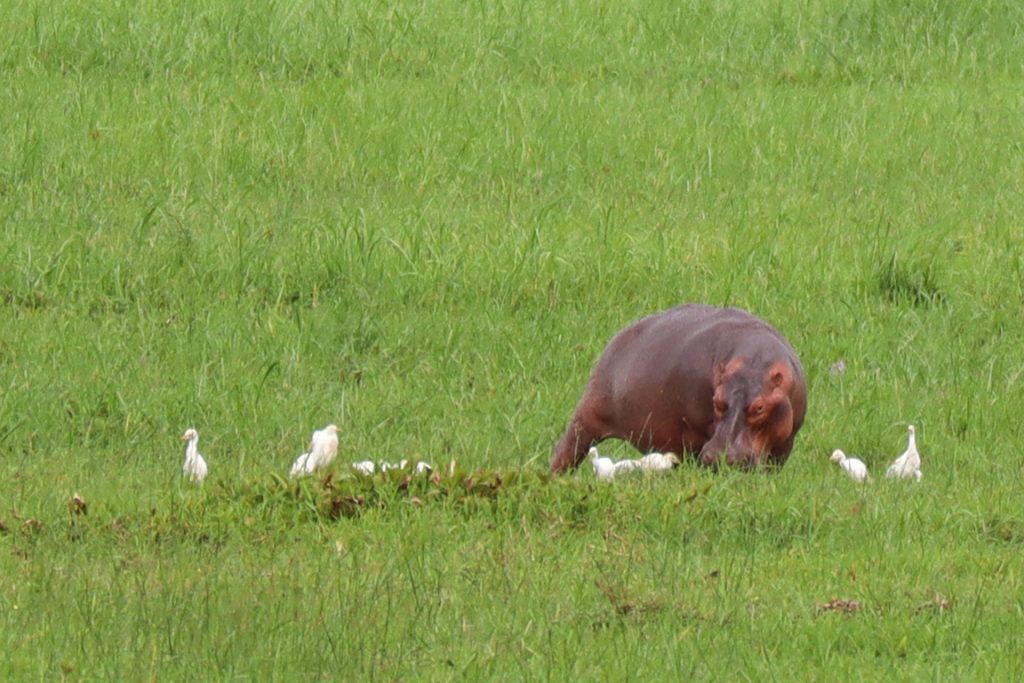

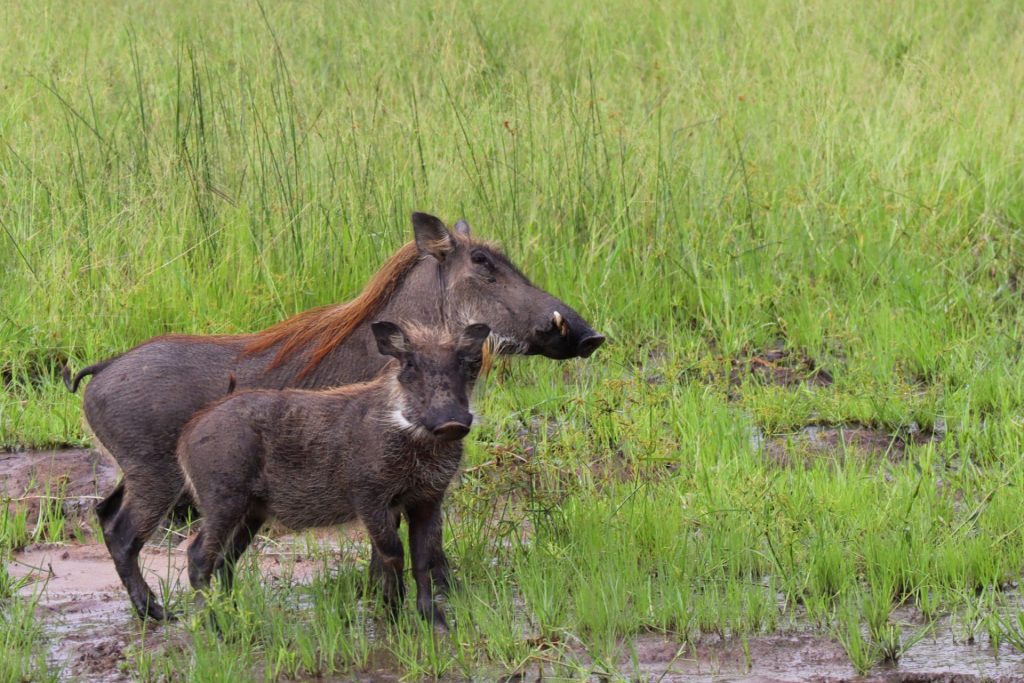
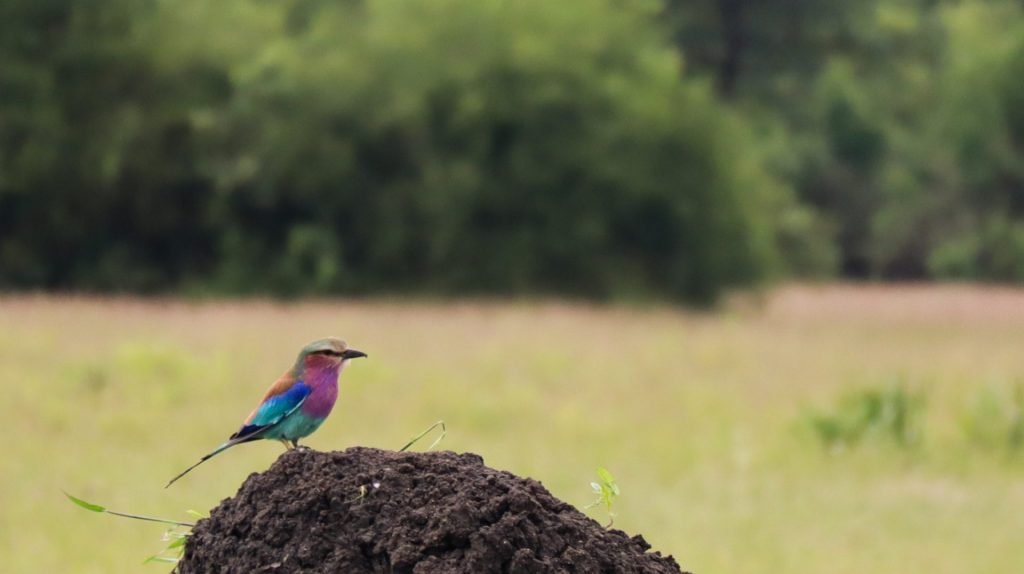
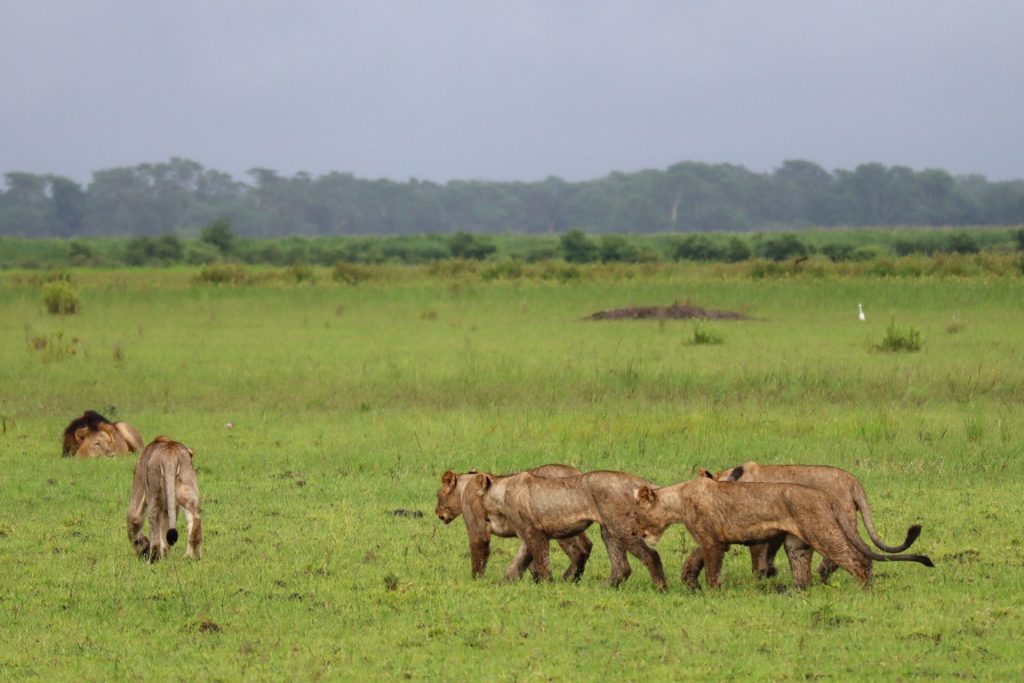
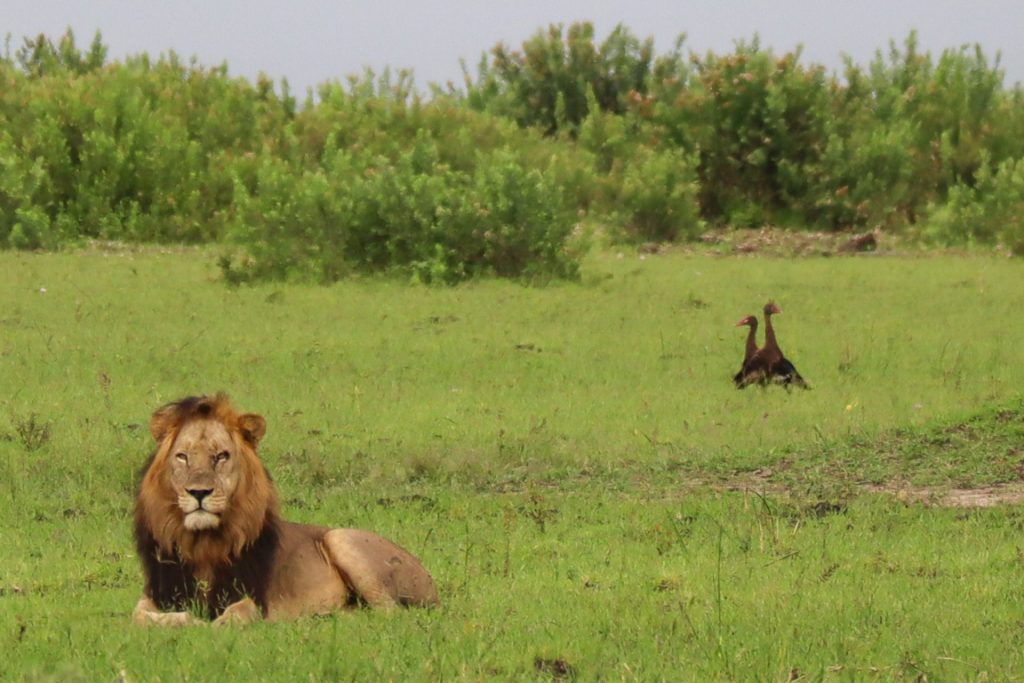
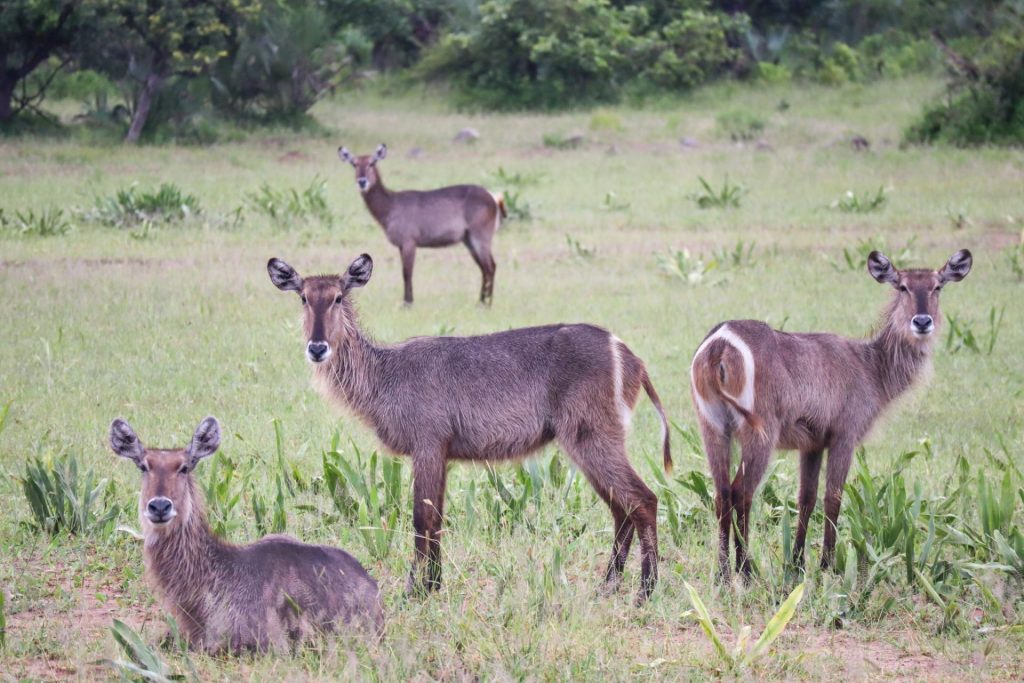
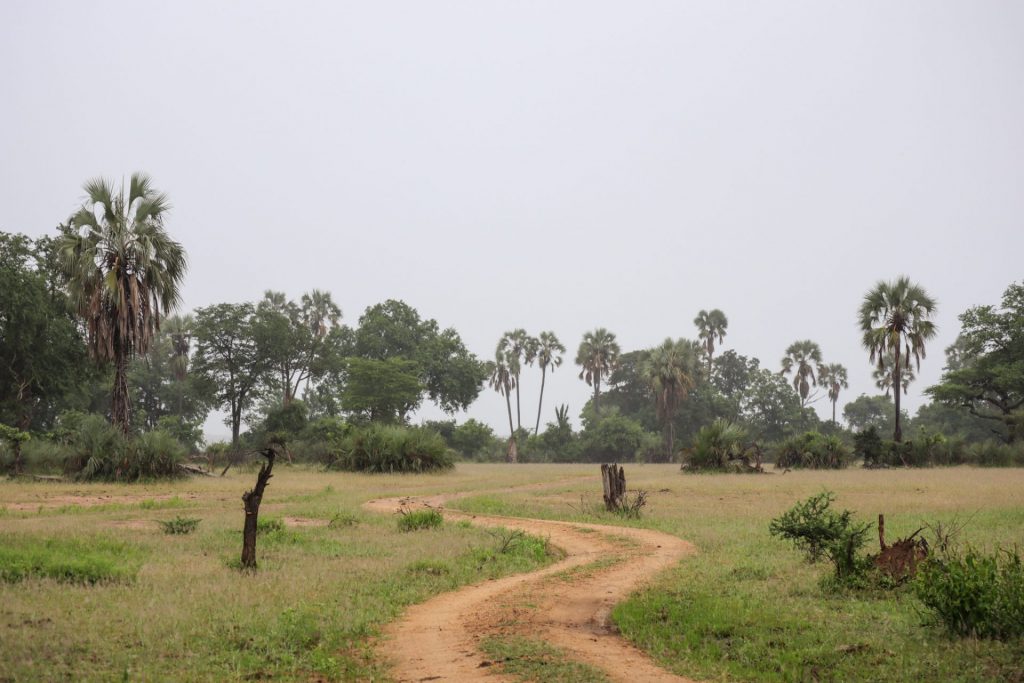

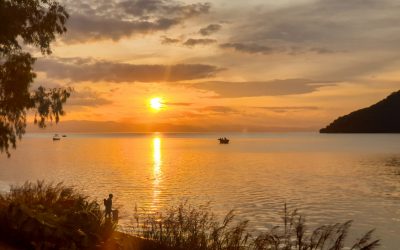
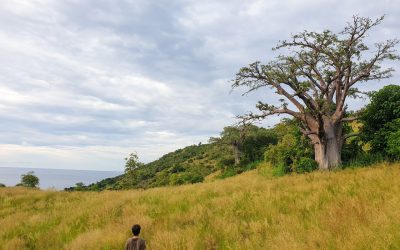
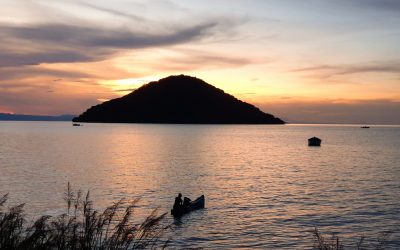
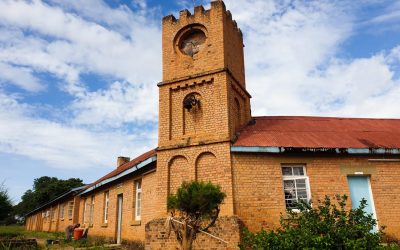

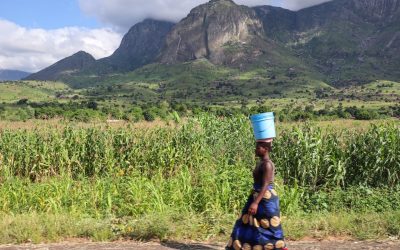
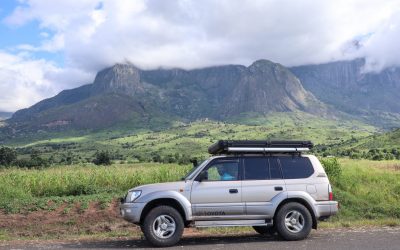
0 Comments